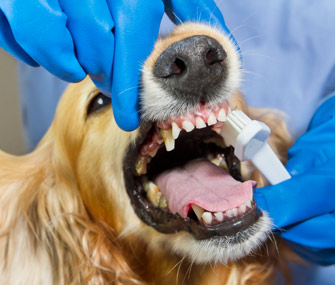How Preventive Care for Pets Pays Off
Published on January 27, 2014
Skip To

Why Pets Need Preventive Care
In 2011, a landmark study showed that pets were seeing their veterinarians less frequently than in years past. This puts pets at increased risk for complications from preventable conditions. Fewer veterinary visits also mean pets are more likely to suffer from life-threatening diseases — like cancer — that benefit from early detection.I’ve created a set of comparisons, drawn from our Veterinary Pet Insurance database, of the average cost of treating five common ailments with and without preventive care. Please note that these are average prices drawn from VPI claims data; the actual costs of care may vary dramatically from one region to another. Cost of care may also be affected by the complexity of a pet’s illness (hospitalization will raise the price, of course) and the involvement of a specialist or specialists. Finally, treatment that originates in an emergency-care facility may have a higher price tag than those used here.
The first number shows the average cost of treating each health issue when it is caught early; the second shows the average cost of treating it at a later stage.
Dental Diseases ($171.82 vs. $531.71): Broken teeth and infected gums are not only very painful, they can also shorten a pet’s life by showering internal organs with bacteria from the mouth. Not all dental problems are visible (some are under the gum line), which is why regular dental examinations and veterinary cleanings under anesthesia are critical to keeping pets healthy. And don’t neglect home care: Brushing your pet’s teeth is a major money saver over time.
Internal Parasites ($29.51 vs. $179.93): Internal parasites are a problem for pets and people both, which is why public health experts recommend keeping pets parasite-free. Proper attention to keeping yards and litterboxes clean, along with veterinary tests to screen for and treat parasites, will help keep them from bugging your pet. Preventive care is a relative bargain and keeps your entire family safer.
External Parasites ($84.89 vs. $180.67): Diseases such as Lyme disease (transmitted by ticks) and flea allergic dermatitis are caused or triggered by the bites of mosquitoes, ticks or fleas. Fleas and mosquitoes also spread tapeworms and heartworms, respectively. Veterinary screening and preventive medication are key, as are removing ticks after every outing and keeping your home flea-free.
Infectious Diseases ($73.52—$85.14 vs. $687.24): We often take for granted the medical miracle of vaccines — but if your pet isn’t properly vaccinated and is exposed to the parvovirus or feline leukemia, the results are often heartbreaking. Depending on the practice, vaccinations for your cat may be slightly more expensive than for a dog, but the cost is still significantly less than treating the disease — assuming the disease is even treatable. Although some vaccines are still given annually, “yearly shots” to protect against some other diseases are no longer recommended by most veterinary experts; talk to your veterinarian about tailoring a vaccine regimen to your pet’s risks and lifestyle (indoor vs. outdoor cats, for example).
Reproductive System Diseases ($260.69 vs. $531.98): Animals who retain the ability to reproduce are vulnerable to diseases of their reproductive systems, including pyometra (an infection of the uterus) and cancers of the reproductive system. The recommended age to spay or neuter is currently under debate, but the overall health (and population control) benefits of altering remain undeniable.
This list is just the tip of the iceberg: Pet owners can save hundreds — even thousands — of dollars on veterinary costs by following their veterinarian’s advice on preventive care. And many veterinarians are starting to offer preventive and wellness care programs that ease the financial burden for pet owners.
The benefits of preventive care are more than monetary. Veterinary professionals want to help you prevent disease while boosting your pet’s lifespan and quality of life. While treating pet health problems is what your vet is here for, your veterinarian — and your insurance company — would prefer to help you head off your pet’s illness at the pass.





